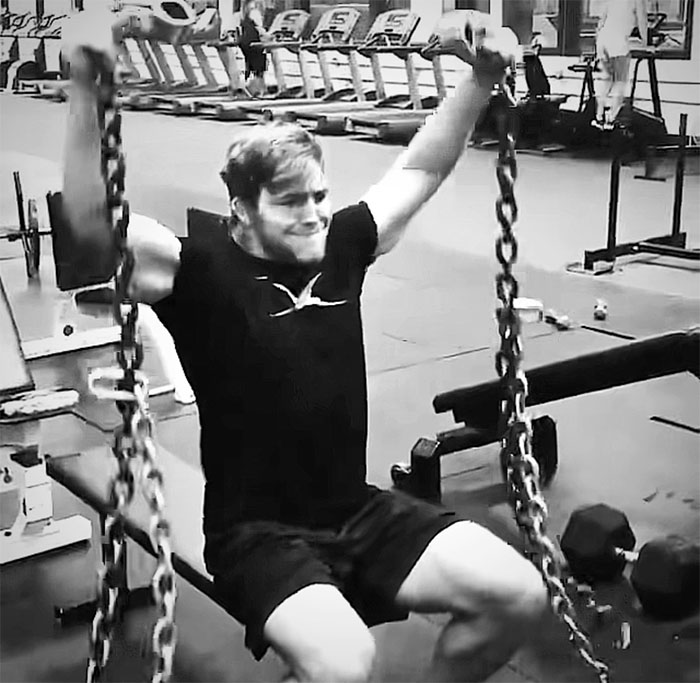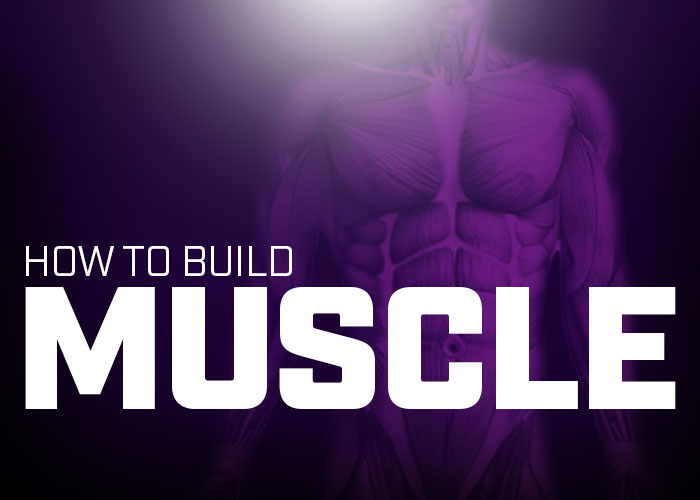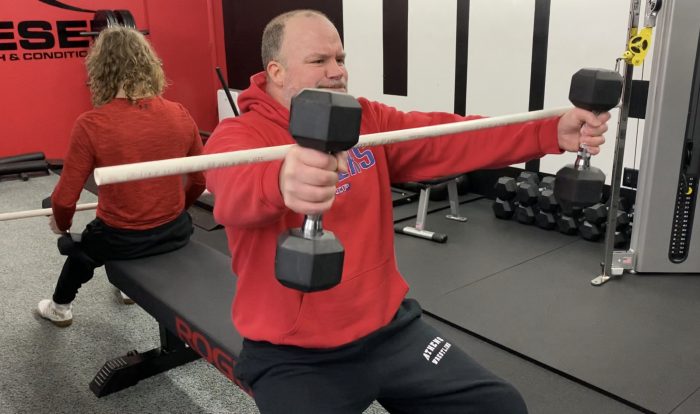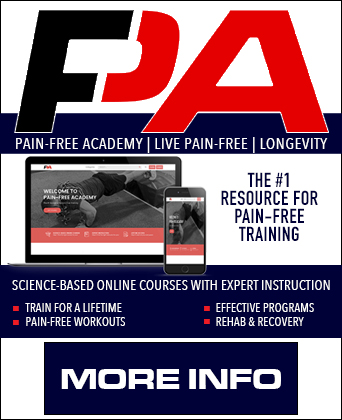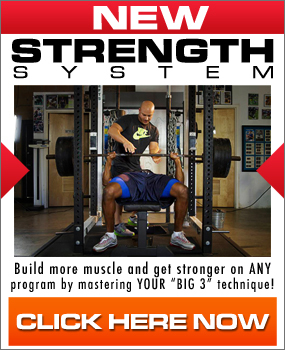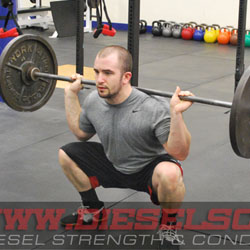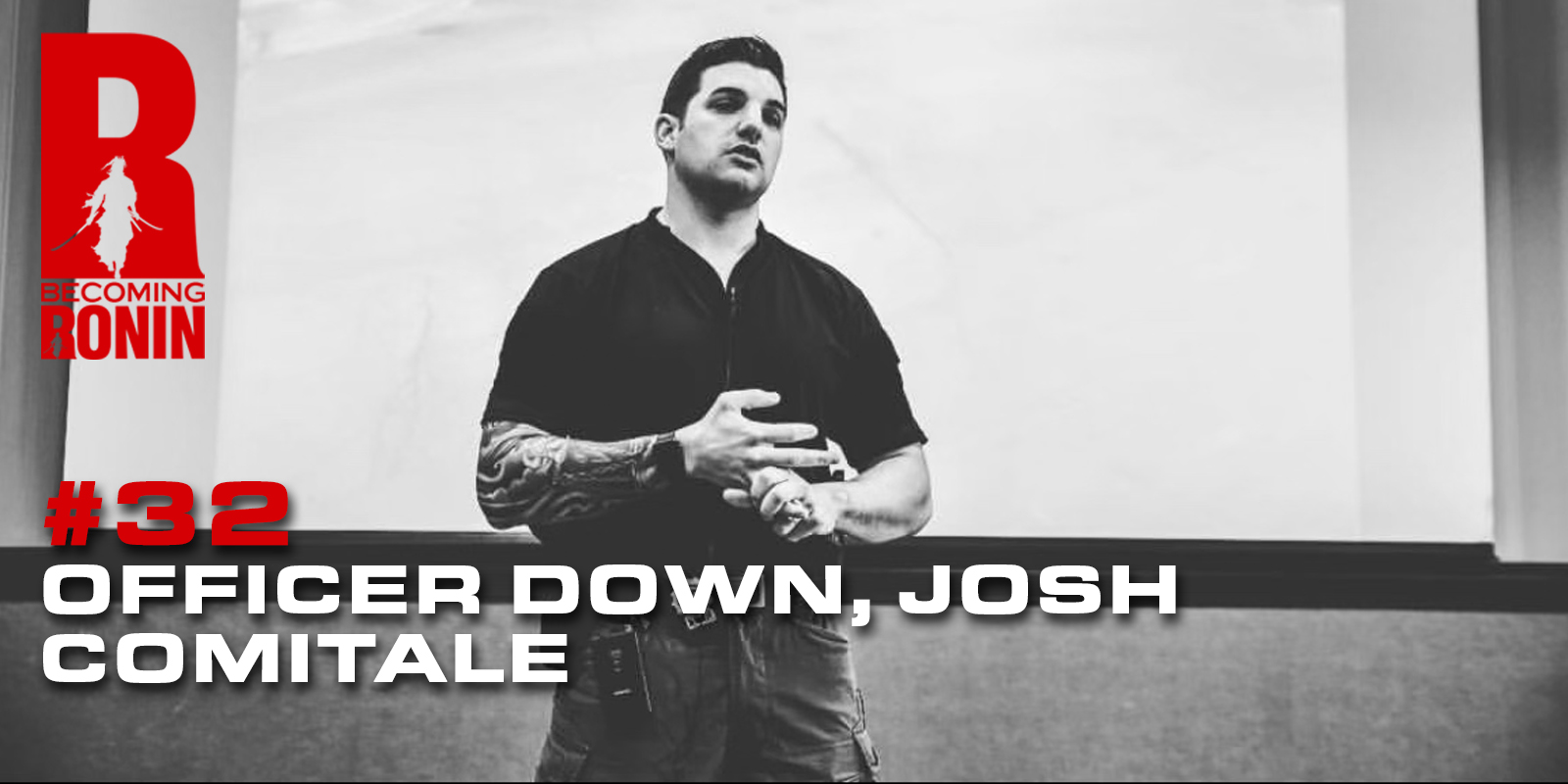A New Way to Build Your Biceps – Simple and Effective Techniques – Part 1
A New Way to Build Your Biceps
Simple and Effective Techniques – Part 1
A long time ago, some white-haired, troll doll looking dude, said something pretty profound, “Insanity: doing the same thing over and over again and expecting different results.”
I typically don’t make a habit out of listening to guy’s whose hair looks like a q-tip that went through the dryer, but as I get older, I realize he might be right.

The Way of the Barbell
If you ask most people who train, “What is the single most important piece of equipment in the gym?”, what do you think the top three answers would be?
Survey says, top 3 answers on the board!
1. Barbell
2. Dumbbells
3. Bodyweight
And to take it a step further, if you ask them what the best piece of equipment for building mass is, I’m sure they would say the barbell. When you’re talking about heavy compound movements, you have to agree with them. The stability required for maximal effort movements (bench, squat, deadlifts, press, cleans), or even dynamic movements upwards of 50-75% of 1RM, dictate that the implement be rigid enough to handle the forces.
The problem arises when we start to migrate the barbell into our upper body supplemental work. For example movements that try to “isolate” a specific muscle group. In our article today, we’ll focus on a conventional barbell exercise used to build massive arms.
The problem is that…
When we use a barbell for things like bicep curls and skull crushers, we are asking for problems. The barbell does allow us to overload the movements for a better mass training effect, but at what cost.
Hinging at the elbow with our wrists and elbows in a locked position due to the rigid aspect of the barbell, puts a TON of stress on these joints. As I’ve gotten older, training my biceps the same way I did as a kid, just got to be plain stupid. For days after an arm workout where I used a barbell, my wrists and elbows were murdered. And as you get older, you don’t recover as fast as you used to. So this soreness and irritation would last for many days, often affecting my performance in the next several workouts.
For compound movements, we have a greater capacity to perform heavier barbell movements, but don’t be so hasty to think that you can perform isolated movements with the same implement.
Wisdom Comes at a Cost
Dropping the barbell for bicep and tricep work has been a lifesaver and the smartest thing I have ever done. My wrists feel better and my elbows don’t ache anymore. Don’t be lulled into those pics in the fitness magazines that show the bodybuilders performing endless sets of heavy barbell curls. With that being said, many lifters never experience issues performing curls with a barbell, but for some (me included) they are definitely a contraindicated exercise. Each exercise in a program has a purpose, but if someone cannot perform the exercise the way it is written, there are many other variations that can be done – a variation of the movement (regression or progression) can be performed or even a different bar (implement) can be used.
There is a Better Way
So what is the next best mass builder for the biceps?
Chin-ups?
Not so fast!
Does the chin-up bar look familiar? A straight barbell perhaps? It seems the very “rigidness” factor that we didn’t like about the barbell is going to present itself with chin-ups. And for lifters with tight lats, poor int/ext rotation range of motion or a kyphotic posture, optimally performed chin-ups will be very tough to do with repercussions
But, we do have options.
Enter the Ring vs. Bartendaz
Gymnastics Rings are an amazing option for chin-ups for those who can’t perform chin-ups on the bar without pain. The arms can adjust through the range of motion to accommodate anyone’s individual restrictions (much like dumbbell curls are a freer movement than barbell curls). That is the sign of a good implement. You can hit the bicep from many different angles and you are not only building arm mass, but you’re targeting the back at the same time, which is the definition of a compound exercise.
In the second part of the video, you’ll see a Bartendaz variation to the conventional chin-up is also an amazing alternating. If you have a power cage, it can be done very easily. Because of the angle, there is much less strain on the joints and many lifters find it a lot more comfortable.
Try these two new mass building variations for the biceps and you will see how much less joint stress there is because of the non-rigid implement. Stay tuned for the next installment, where we’ll discuss the second safe strategy for building massive arms.
By Smitty on October 4th, 2011
FREE DIESEL NEWSLETTER
- Discover Pain Free, Joint-Friendly Training
- Get Super Effective Workouts and Programs
- Inspirational Life Lessons Each Week
- Effective Habits For Busy Entrepreneurs






